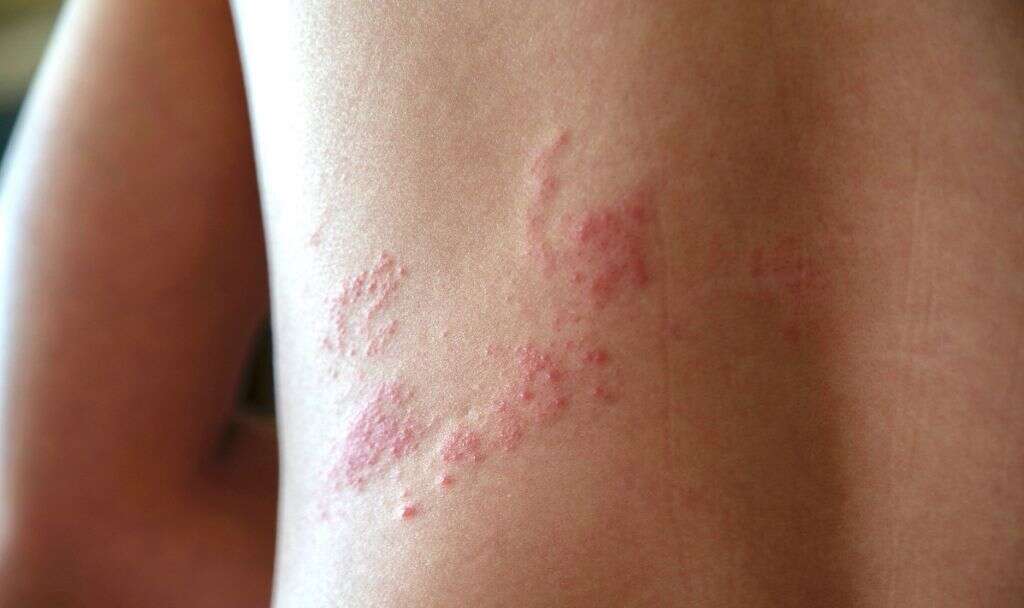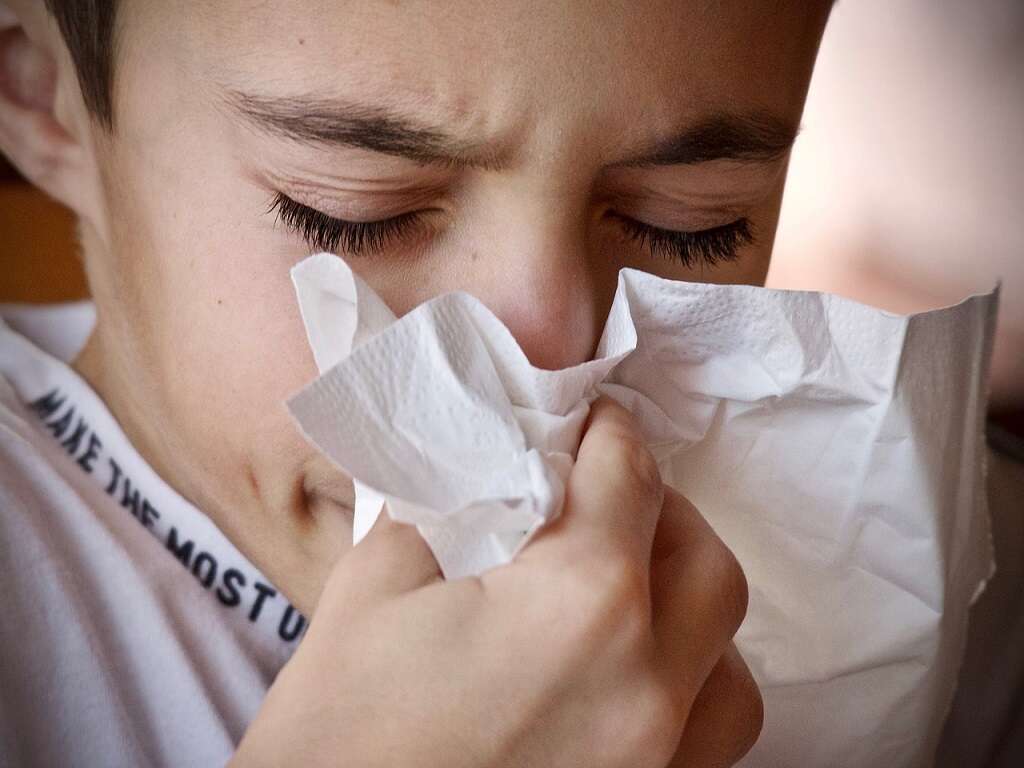10 Shingles Symptoms
 Article Sources
Article Sources
- 1. Shingles (Herpes Zoster). National Center for Immunization and Respiratory Diseases, Division of Viral Diseases. Centers for Disease Control and Prevention (CDC) - https://www.cdc.gov/shingles/hcp/clinical-overview.html
- 2. Headache Classification Committee of the International Headache Society (HIS). The International Classification of Headache Disorders, 3rd Edition (ICHD-3) – www.ichd-3.org
Shingles is a viral infection caused by the reactivation of the Varicella Zoster Virus (VZV). This is the same virus that causes chickenpox. When a person becomes infected with VZV for the first time, it causes chickenpox. After the patient recovers from chickenpox, the virus remains dormant in the nerves of the individual. The virus can remain hidden for years and even decades without causing any symptoms whatsoever, until the person’s Immune system becomes impaired, and the virus reactivates causing the condition known as herpes zoster or shingles.
Over a million cases of shingles occur each year in the US. 1Shingles (Herpes Zoster). National Center for Immunization and Respiratory Diseases, Division of Viral Diseases. Centers for Disease Control and Prevention (CDC) - https://www.cdc.gov/shingles/hcp/clinical-overview.html Any person with a history of chickenpox or varicella immunizations can develop shingles, but people with a compromised immune system have a higher risk. Even though cancer patients and people with HIV have a greater risk, the elderly are also quite susceptible to this disease.
1. Headache
A headache is described as the sensation of pain in any region of our head. It is a non-specific symptom associated with many conditions. Depending on the characteristics and nature of the headache, they can be classified into primary headaches (migraines and tension-type headaches to name a few), secondary headaches (traumatic, vascular, and substance-related headaches to name a few), and a third category reserved for neuropathies and other headaches. 2Headache Classification Committee of the International Headache Society (HIS). The International Classification of Headache Disorders, 3rd Edition (ICHD-3) – www.ichd-3.org
During the first stage of the disease, patients tend to experience vague symptoms like fever, malaise, and headaches. These symptoms occur just before the characteristic rash appears and usually don’t last very long. Depending on the affected nerve, some patients may experience severe headaches.
2. Malaise
Malaise is a very subjective symptom that can be described as a general feeling of discomfort or a state of uneasiness that is quite difficult to describe. Due to its subjectivity, it is not a very helpful diagnostic tool, as it is a non-specific symptom that can be associated with many conditions.
This symptom is part of the constitutional signs and symptoms associated with the early stage of the disease, just before the rash appears. Just like the rest of the symptoms seen in the early stage of shingles, it doesn’t last very long.

3. Fever
A fever is an increase in body temperature. Usually, the temperature should be above 38⁰C (100.4⁰F) in order to be considered as a fever, but this depends on the site where the temperature is being measured. A fever is usually a response of the body to a threat. By increasing the body’s thermostat set point, we start to shiver to generate heat in order to reach the new temperature that has been set.
Shingles is a viral infection, therefore, it may cause fever. Despite being an infectious condition, not all patients will develop this symptom. For the patients that do develop fever, it usually appears before the characteristic rash appears and it rarely causes more than a mild fever.
4. Rash
A rash is a disturbance in the normal structure of the skin, usually involving changes in the skin color and texture. It is a non-specific symptom that can be seen in many conditions. Usually, a rash can cause itchiness in the affected area, but this is not always the case.
This is the most characteristic symptom associated with shingles. The appearance of a red patch in the affected region signals the onset of the second stage of the disease known as the acute eruptive phase. Usually, the rash will only affect the regions that are associated with the affected nerve but some people might have a more disseminated presentation. This rash is usually painful and it can be itchy as well. The location is going to be determined by the affected nerve but the most common sites of the rash are the torso and the abdomen.

5. Blisters
Blisters are defined as bubble-like pockets on the skin that are filled with a fluid called serum. Small blisters are known as vesicles, whereas larger blisters are called bullae. They can be caused by many conditions such as burns, allergic reactions, and infectious diseases like impetigo and herpes zoster.
Vesicles on top of the red patchy rash are a hallmark of this disease. These vesicles can cause itchiness but it is important not to scratch them as it can lead to secondary infections. The lesions and the serum inside the vesicles are highly contagious, therefore, people at risk should avoid contact with these vesicles at all costs.
6. Swollen Lymph Nodes
Lymph nodes are a crucial component of a person’s immune system. They can be found all over our bodies, connected by a complex array of lymphatic vessels. The lymph nodes filter pathogens and play a very important role in cell-mediated immunity. Many conditions may cause lymph nodes to become swollen and depending on the cause and location of the inflammation, a specific group of lymph nodes located near the problem will swell.
Swollen lymph nodes are part of the second stage of shingles known as the acute eruptive phase. Depending on the location of the affected nerve, multiple lymph nodes can be involved. The most commonly affected lymph nodes are the ones in the axillae and the neck.

7. Pain
Pain can appear at any stage of the disease. Some patients experience pain in the affected region even before the rash appears. On the other hand, most people will feel severe pain during the acute eruptive phase of the disease. The virus that remained dormant in the nerves, is going to cause damage to them, causing severe pain in the regions associated with the affected nerves.
Some patients may experience chronic pain lasting over a month after the rash has cleared. This condition is known as postherpetic neuralgia (PHP) and it signals that the patient has entered the chronic phase of the disease. Not all the patients suffering from shingles will develop a chronic condition but the ones that do, usually struggle with severe and incapacitating pain lasting for weeks and even months.
8. Altered Sensations
Paresthesia is the medical term used to describe an altered sensation on a part of the body that usually manifests as tingling, numbness, or burning without an apparent reason. It can be caused by applying an abnormal pressure to a nerve, which causes the transient feeling of numbness that we experience after crossing our legs for too long or falling sleep on top of our hands. It can also manifest as “pins and needles” sensation that can be a sign of nerve damage.
The varicella-zoster virus affects our nerves. For most patients, this will translate into severe pain, but for some patients, it could manifest as a burning sensation or even numbness and tingling of the affected region.

9. Red Eyes
The white part of our eyeballs is called the sclera which is covered by a thin transparent layer called the conjunctiva. Many conditions can cause the white part of our eyes to turn red or pinkish. Usually, this happens as a result of dilated blood vessels in the conjunctiva, which can be caused by many conditions including direct trauma to the eye, allergic reactions, and infectious diseases to name a few.
Even though shingles usually affect the nerves located in the torso or abdomen, some patients might experience symptoms in other parts of their bodies. A condition called herpes zoster Ophtalmicus results from the reactivation of the varicella-zoster virus in the trigeminal nerve located in the head. This condition usually affects the eye, causing conjunctivitis and in some cases, it might affect visual acuity.
10. Ear Pain
Otalgia is the medical term used to describe pain in the ears. It usually affects only one ear at a time but depending on the underlying condition causing the pain it might cause bilateral symptoms as well. External ear pain or pain elicited by touching the external part of the ear should be differentiated from pain inside the ear canal. Many conditions like otitis externa, acute otitis media (AOM), and pharyngitis may cause this symptom to appear.
If the varicella-zoster virus (VZV) affects the nerves in the head, it can cause a condition known as herpes zoster oticus. The main characteristic of this condition is ear pain and the finding of the usual red patchy rash with vesicles near the ear. Luckily, this condition is not very common and often times can be overlooked or confused with other similar diseases.









